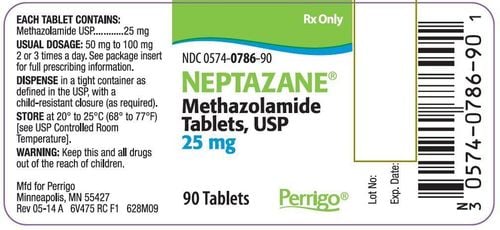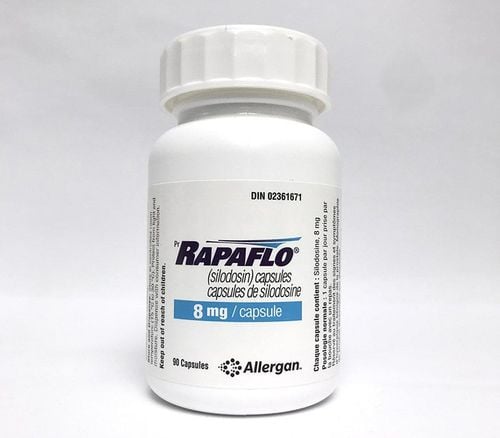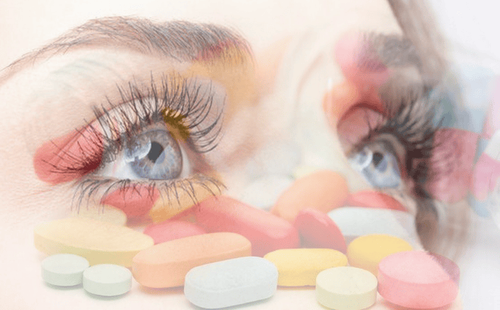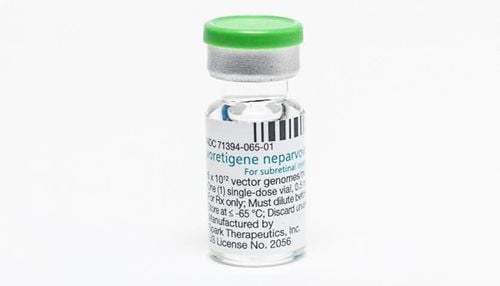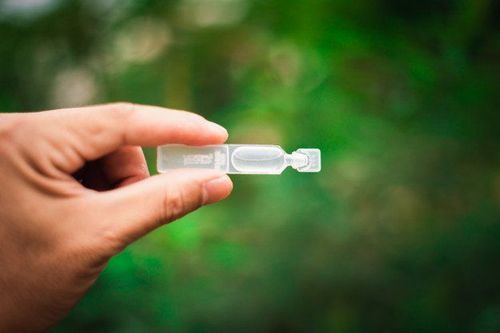This is an automatically translated article.
Contains the main ingredients are Chloramphenicol and Dexamethasone sodium phosphate with the respective concentrations of 20mg and 5mg. It is indicated primarily for the treatment of certain inflammatory or infectious conditions in the eye area.
1. What is Dexinacol?
Dexinacol is a brand name of the active ingredients Chloramphenicol and Dexamethasone sodium phosphate. The drug is prepared in the form of an eye drop solution (box of 1 bottle of 5ml).
Each 5ml of Dexinacol drug solution contains 20mg of Chloramphenicol, 5mg of Dexamethasone sodium phosphate and some other excipients just enough.
2. Dexinacol medicinal uses
The drug is used mainly to treat some of the following conditions:
Acute conjunctivitis. Corneal ulceration. Tear gland infection. Eyelid inflammation. Decontamination before and after eye surgery. Chloramphenicol is an antibiotic isolated from Streptomyces venezuelae, now produced synthetically.
Chloramphenicol is usually bacteriostatic, but can be bactericidal at high concentrations or against highly susceptible bacteria. Chloramphenicol acts by inhibiting protein synthesis in susceptible bacteria by binding to the 50S subunit of the ribosome. The drug also has the same site of action as:
Erythromycin. Clindamycin. Lincomycin. Oleandomycin. Troleandomycin. Furthermore, chloramphenicol also inhibits protein synthesis in rapidly proliferating mammalian cells. May cause bone marrow suppression and may be irreversible.
An additional property of chloramphenicol is its immunosuppressive activity if administered systemically before antigenic stimulation; however, antibody response may not be significantly affected when chloramphenicol is administered post-antigen. .
The drug does not have a spectrum of action against some of the following species:
Escherichia coli. Shigella flexneri. Enterobacter spp. Staphylococcus aureus. Salmonella typhi. Streptococcus pneumoniae. Little effect on fungi. Chloramphenicol is rapidly absorbed from the gastrointestinal tract. After topical application in the eye, chloramphenicol is absorbed into aqueous humor. It is then metabolised in the liver and eliminated mainly in the urine.
Dexamethasone is fluomethylprednisolone, a synthetic glucocorticoid, almost insoluble in water.
3. Instructions for using Dexinacol
The drug is indicated mainly in the following cases:
Infection of the anterior part of the eye, eyelid and lacrimal gland. Prevention of infection before and after surgery. Chemical burns and other types of burns. Trachoma . Zona eye . Irrigation of the tear drainage system for therapeutic or prophylactic purposes. Dosage is indicated as follows:
Instill 1 to 2 drops directly into the eyes. Can be used several times a day. If acute can be instilled 1 drop every hour. Usually used for about 10 days. If the infection still does not improve within the above time, you should see your treating doctor so that the medicine can be changed, as well as combined with other treatments. Children: Overdose can cause dangerous allergies. Therefore, it is necessary to discuss with a specialist to determine the appropriate drug and dosage for each age group. For pregnant women and lactating women: It is not known whether the drug is transported across the placenta or excreted in breast milk. Therefore, it is advisable to consult a specialist to determine whether the drug should be taken or not. Before prescribing Dexinacol, tell your doctor if you have one of the following contraindications:
Hypersensitivity to Chloramphenicol, Dexamethosone or any of the ingredients. Bone marrow failure or a family history of bone marrow failure. Infant. Viral and fungal infections of the eye. Lazy eye. Increased intraocular pressure. Intermittent acute porphyria. Severe liver failure. Severe blood disease. Peptic ulcer. Note that when using Dexamethasone in high doses for a long time, it will inhibit the pituitary gland, causing corticotropin (ACTH) release, causing the adrenal cortex to stop secreting endogenous corticosteroid hormones, causing secondary adrenal insufficiency.
Do not arbitrarily change drugs or increase or decrease the dose without the permission of a specialist.
It is also necessary to be careful when using it on the elderly, especially with many underlying diseases such as hypertension, diabetes, kidney failure,...
Can be used for people who do jobs involving driving or operating machinery.
In case you miss a dose during the course of taking the medicine, take it as soon as you remember, usually it can be taken about 1-2 hours after the time ordered by the doctor. However, if it is almost time for your next dose, skip the missed dose and take the next dose at the prescribed time. Do not take twice the recommended dose. However, the drug should be taken at the same time each day to increase the effectiveness of treatment.
Do not tear the package of the medicine, store it at a temperature below 30oC and in a dry place, protected from light. If the medicine shows any signs of damage or changes color, watery, squishy, the medicine should be discarded and used with another medicine box.
4. Drug interactions and side effects of Dexinacol
4.1 Drug Interactions Some products can interact with each other, so before you get a prescription, make a list of all the medications and supplements you are taking to consult with your doctor. doctor.
Drugs that can cause interactions such as:
Erythromycin. Clindamycin. Lincomycin. Oleandomycin. Troleandomycin. The drug should not be used with foods such as alcohol, beer, tobacco, ... because in those foods and drinks containing other substances, it can affect the phenomenon of antagonism or synergism with the drug. medicine.
Also should not be used with other eye drops to avoid interactions, unless directed by a specialist.
4.2 Side effects Some of the possible side effects of Dexinacol are:
Local irritation. Allergy. A fleeting feeling of pain. Bitter taste in the mouth. Partially irreversible blood dysplasia. Neuritis is reversible. Inflammation and ulceration of the stomach - duodenum. Cushing's syndrome. Osteoporosis. Amyotrophic lateral sclerosis. When a drug allergy occurs, it is necessary to take the patient to the hospital immediately for treatment according to the anaphylactic shock treatment protocol issued by the Ministry of Health.




